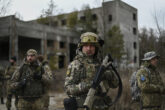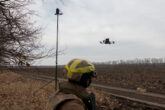February 23, 2017
CVE Was Doomed to Fail. Under Trump, It Will Get Worse
Federal countering violent extremism (CVE) programming is more likely to harm than help build trust in American communities. Though well-intentioned, the Obama administration’s CVE strategy was flawed in its conception. Continuing CVE under the Trump administration will worsen an existing problem and place a burden on local CVE partners. Absent a radical change in policy by the Trump administration, local partners ought to disassociate themselves from federal CVE programming to salvage their credibility.
In 2011, the Obama administration released a national CVE program to build a soft counterterrorism strategy. The CVE rollout called on law enforcement to work with a wide range of local partners, including educators, public health professionals, faith-based leaders, and NGO workers. Together, these actors helped law enforcement develop community activities like table-top exercises, awareness briefings, and intervention programs. Five years after the strategy’s launch, local government officials and community groups have reported increased distrust and stigmatization in several cities, including each of the CVE’s pilot cities The design of CVE strategy was doomed to fail due to three principal reasons.
First, the U.S. government lacks an interagency consensus on a definition of violent extremism and program evaluation metrics. Despite the proliferation of research on violent extremism after 9/11, the U.S. does not have a model for what causes an individual to take up violence. Moreover, CVE program design tends to draw on gang intervention studies, which offer a comparable group of individuals who may be vulnerable to violence, but also lack credible evaluation metrics. Neither CVE nor gang interventions can ensure that community partners will be able to evaluate the progress of a given participant two or three years past the program’s launch. Defining success is therefore a perennial problem for CVE programs because it is impossible to determine the point at which a potentially violent person is no longer potentially violent.
Read the full article at Small Wars Journal.
More from CNAS
-
Defense / Transatlantic Security
When Defense Becomes Destruction: Austria-Hungary’s Mistake and Ukraine’s RiskThis article was originally posted on War on the Rocks. The southeastern Polish city of Przemyśl, with its elegant 19th century Habsburg-era train station, remains one of the ...
By Franz-Stefan Gady
-
Defense / Transatlantic Security
Ukraine’s Catch-22 MomentThis article was originally published in the Financial Times. In Joseph Heller’s wartime classic, Catch-22, the protagonist Yossarian seeks out the US army surgeon Doc Daneeka...
By Franz-Stefan Gady
-
CNAS Insights | Budgetary Own Goals Undermine “Speed and Volume”
On November 7, Secretary of Defense Pete Hegseth laid out a plan to overhaul the Department of Defense’s (DOD’s) acquisition system. Placing an emphasis on delivering new capa...
By Philip Sheers, Carlton Haelig & Stacie Pettyjohn
-
Drones: Who Is Making the New Weapons of War?
From Ukraine and Russia to Gaza and Sudan, drones have become a key weapon of war. Which companies are making them, and profiting from this rapidly expanding but controversial...
By Stacie Pettyjohn




